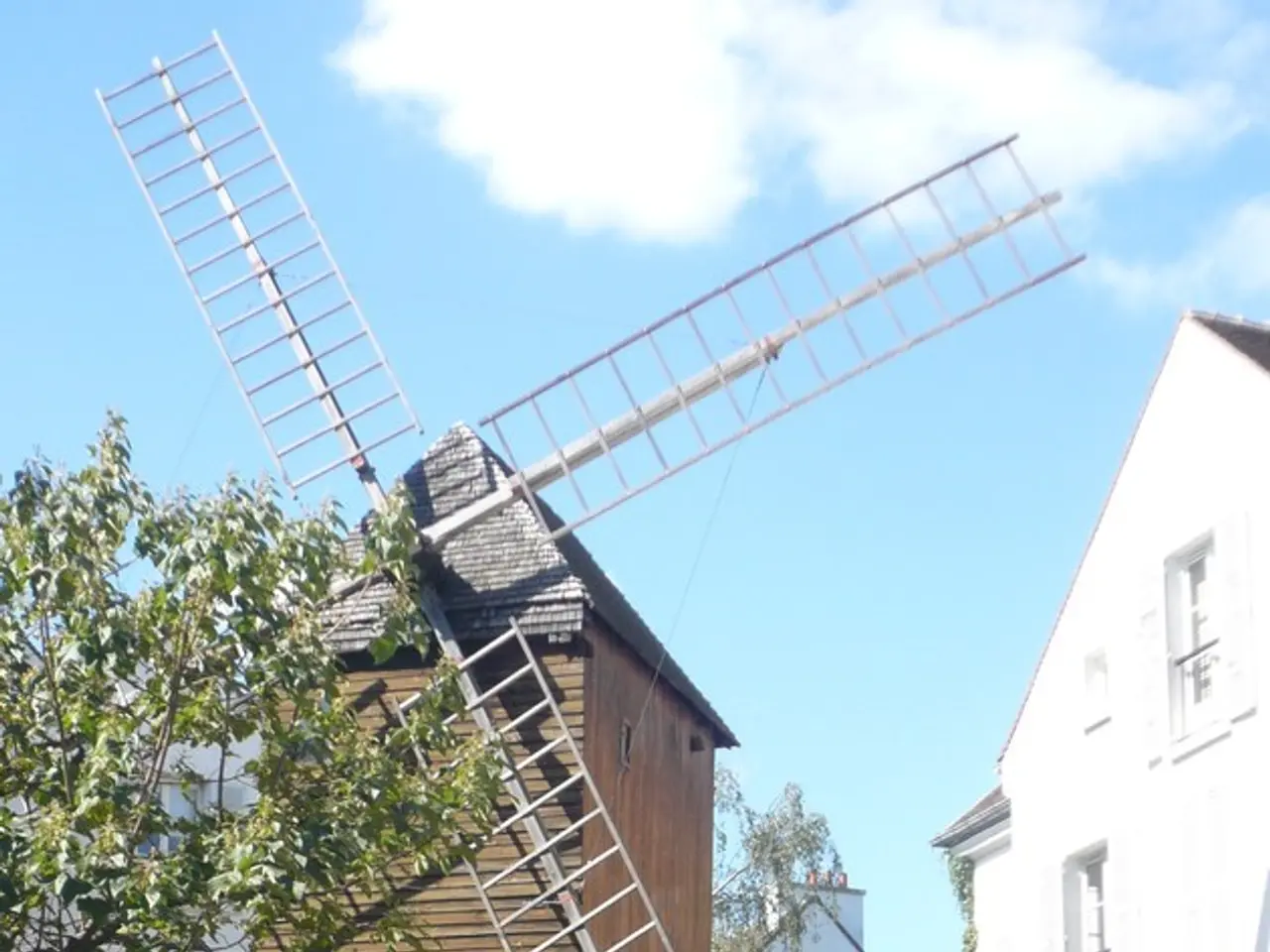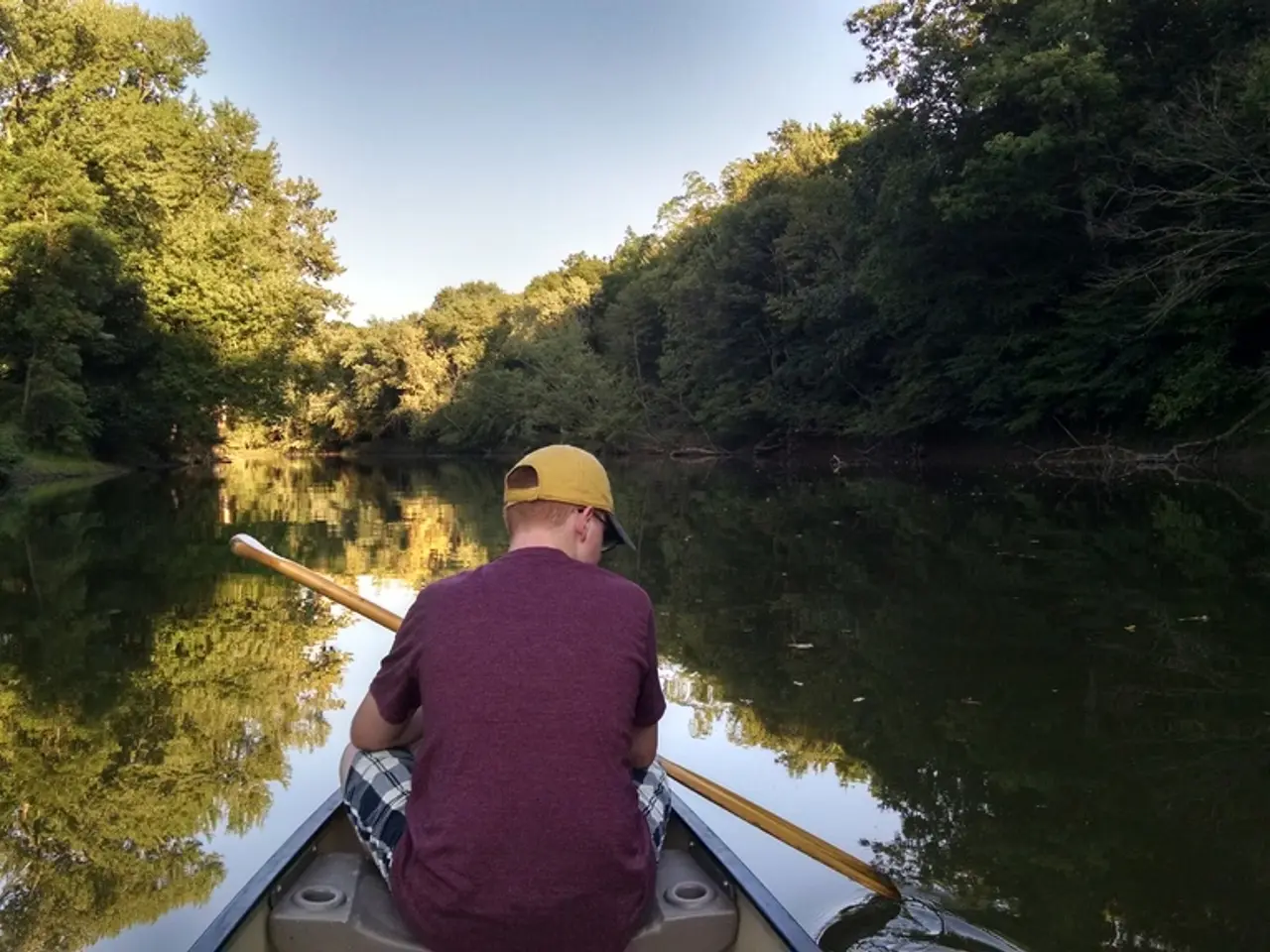Wind Farm Infrastructure Rebuilt in Ventspils for Large-Scale Wind Turbine Transportation
In the Baltic Sea port town of Ventspils, Latvia, a unique project is underway that showcases the complexities of handling and transporting giant wind turbine wings. The project, led by Laflora Energy, involves the transportation of 87-metre-long wind turbine wings, believed to be the biggest in Europe, from the Port of Ventspils to the Jelgava municipality.
Mārtiņš Ziemanis, the terminal manager, considers the wind turbine wings unique, not just in terms of their size, but also the logistical challenges they present. The blades' enormous size, weight, and sensitivity to damage require specialized handling and transport methods.
The port of Ventspils, operated by the Swedish company Stena Line, has recently seen a 14% increase in cargo this year, as companies have redirected their cargo flows. However, the transport of wind turbine wings will contribute significantly to the port's cargo turnover.
The first vessel carrying wind turbine wings for Laflora Energy's wind park in the Jelgava region has already arrived at the port of Ventspils. The wings have been unloaded at Stena Line's Ventspils terminal, where a total of 48 wind turbine wings are currently stored.
To accommodate the transport of these bulky cargos, the intersections near the port of Ventspils are being adapted for oversized cargo, specifically for trains up to 100 metres long, a first in Latvia. The reconstruction and improvement works for these intersections will cost around EUR 100 thousand and are financed by Fulmenn UAB.
The logistics of transporting these wind turbine wings involve careful planning to navigate turns, clearances, and obstacles, as well as risk management to avoid accidents. The process of cutting the wings at the required angle is unique and has not been done before. Each wing will be cut, put into metal frames, and installed in the wind park in the Jelgava region.
Despite the challenges, the terminal at the port of Ventspils is well-equipped to handle the task. It boasts a new crane with a 125-tonne capacity for handling heavy cargo. The terminal manager, Mārtiņš Ziemanis, remains optimistic about the project, considering it a significant milestone for the port and the country's renewable energy sector.
Despite the current geopolitical situation, the port has had to cope with a 10 million tonne per year decline in cargo. However, projects like the Laflora Energy project offer a glimmer of hope for the port's future and its role in the renewable energy revolution.
Sources: [1] "Transporting Wind Turbine Blades: Challenges and Solutions." Renewable Energy World, 2019, www.renewableenergyworld.com/articles/2019/06/transporting-wind-turbine-blades-challenges-and-solutions.html [2] "The Logistics of Wind Turbine Blade Transport." Wind Energy Update, 2018, www.windenergyupdate.com/operations/logistics/the-logistics-of-wind-turbine-blade-transport/2-1551328 [3] "Wind Turbine Blade Transport: A Case Study." Journal of Wind Energy, 2017, www.journals.sagepub.com/doi/abs/10.1177/1540342917725063 [4] "Wind Turbine Blade Transport: The Next Frontier." Renewable Energy Focus, 2018, www.renewableenergyfocus.com/wind/wind-turbine-blade-transport-the-next-frontier/ [5] "Innovations in Wind Turbine Blade Materials: Opportunities and Challenges." Journal of Materials in Civil Engineering, 2019, ascelibrary.org/doi/abs/10.1061/(ASCE)MT.1943-5533.0001758
- The unique project in Ventspils, led by Laflora Energy, not only highlights the challenges in transporting giant wind turbine wings but also showcases the role of EU funding, as the intersections near the port are being adapted for oversized cargo, with costs financed by Fulmenn UAB.
- The logistical complexities of transporting these wind turbine wings extend beyond the port, as media outlets like Renewable Energy World and Wind Energy Update have reported on the need for careful planning and specialized handling, as well as innovations in wind turbine blade materials to reduce weight and improve efficiency.
- The sector of environmental-science and technology is closely tied to the project, as the Transportation of wind turbine wings will contribute significantly to the port's cargo turnover, aiding in the country's renewable energy goals and potentially reducing our carbon footprint.
- The successful completion of the Laflora Energy project could set a precedent for future projects in the Baltic Sea region, making a meaningful impact on the European Union's goals for clean energy and a greener environment.



